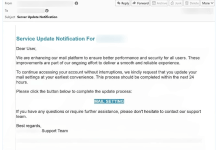Trojans
Dive into the treacherous world of Trojans in our specialized “Trojans” category at BugsFighter.com. Named after the deceptive Trojan Horse of ancient mythology, these malicious programs disguise themselves as harmless software to infiltrate your system, unleashing harmful effects such as data theft, system damage, and unauthorized access to your devices. Our in-depth guides and articles provide critical information on identifying, removing, and defending against Trojans. Learn about the latest Trojan threats, the mechanics of their operations, and the best practices for securing your digital environments. Whether you’re a home user or managing an enterprise network, arm yourself with the knowledge to protect your systems against these cunning adversaries.


























